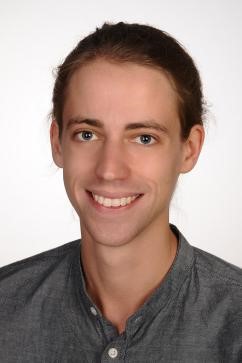報告題目:Biotemplating of titania nanostructures for hybrid photon sensors
報告人:Julian. E. Heger(德國慕尼黑工業大學)
報告時間:2019年10月10日(星期四)上午11:00-11:30
報告地點:長安校區啟翔樓357會議室
邀請人:宋霖教授、陳永華教授
承辦學院:柔性電子研究院
聯系人:張倩文
聯系電話:88460889
報告簡介:
Polymer based films are of high practical use, e.g. as coatings, biomedical applications or flexible electronics. In combination with inorganic materials, this films form interesting hybrid systems of elevated performance, joining advantages of both material classes: Solution processing for cheap industrial fabrication and inorganic characteristics like enhanced electrical, magnetic or drug properties. An interesting approach in the field of soft matter science is to substitute these synthetic polymers with environmental biopolymers, such as proteins. Being water soluble, earth abundant and non-toxic, they open a way to greener processing. We are interested in the structure directing properties of the bovine whey protein ?-lactoglobulin (?-lg) for thin titania films. For this, denatured ?-lg is mixed with established titania precursors to form a sol-gel, which can be eventually deposited. Spray deposition is chosen as a technique of low material wastage. Calcination of the as deposited films combust the biopolymer template and introduces crystallinity into the nanostructured titania. By backfilling the remaining scaffold with the organic semiconductor P3HT, photon sensors can be created. Grazing incidence small-angle X-ray scattering (GISAXS) reveal the film formation in situ during spray coating, as well as in operando morphological degradation of the sensor. GISAXS is complemented by real space imaging, e.g. electron microscopy.
報告人介紹:

Born and raised in Augsburg (Germany), I have studied physics at the University of Regensburg (Germany). My main interests were focused on algorithms for optimization problems, nanoengineering of carbon nanotube devices for low temperature characterization, light-matter-interaction, as well as solid-state physics. I proceeded to work at OSRAM OLED, where I joined a research and development team for flexible organic LEDs. I am currently employed at the Institute of Functional Materials at the Technical University of Munich, Department of Physics (Germany). My research interests are focused on bio-hybrid films and nanostructured metal oxides, e.g. for applications in sensors and hybrid solar cells. Grazing incidence scattering techniques with X-rays and neutrons are used to investigate morphology and composition of the thin films.